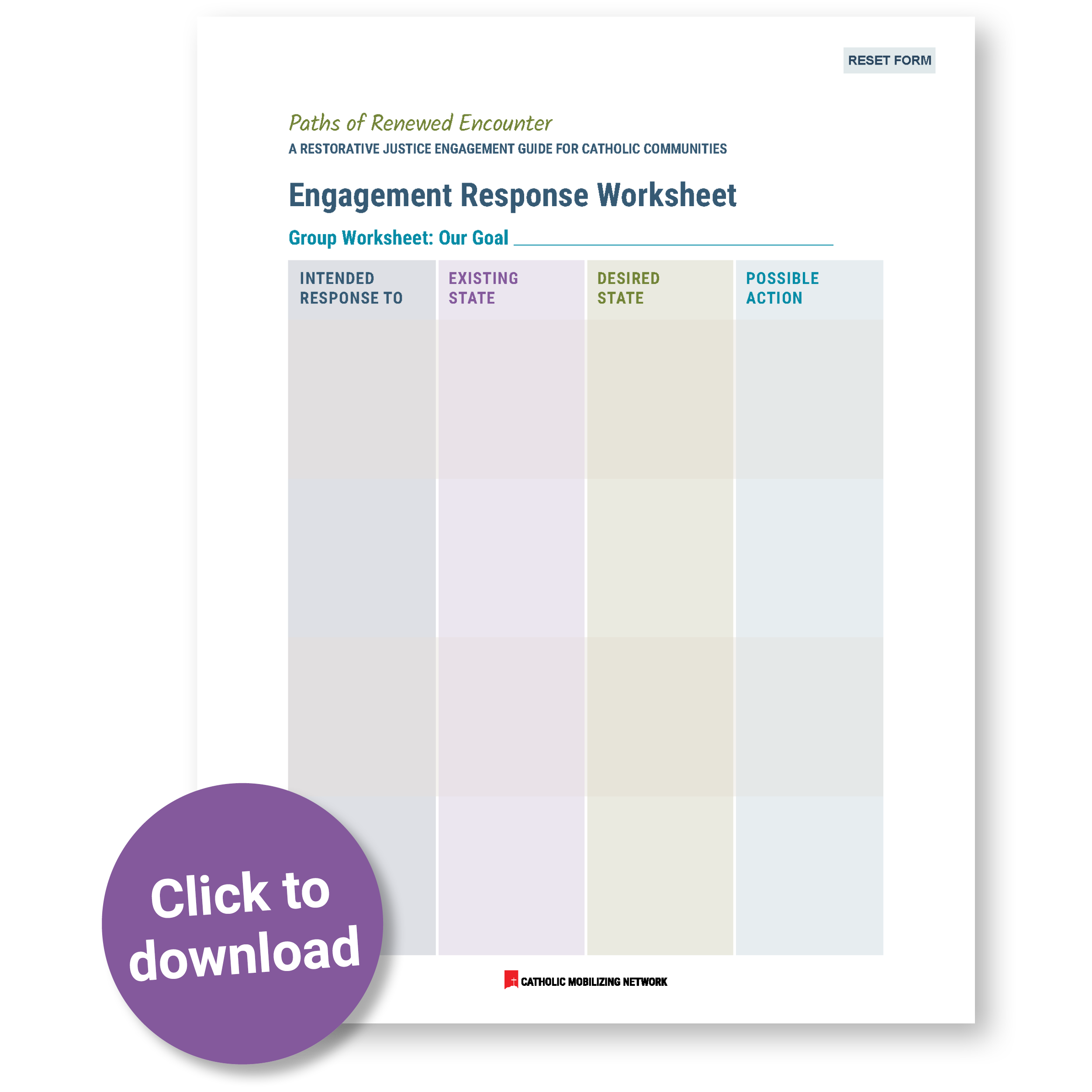The question “What are the needs?” reminds us of Catholic teaching on Solidarity.
We are one human family and are called to be our sisters’ and brothers’ keepers. Because we are deeply interconnected in a web of relationships, harm has rippling effects.
Restorative justice sees people neither as victims in need of pity nor as offenders deserving of punishment, but rather as people whose lives have intersected through harmful behavior and whose needs (physical, material, emotional, and spiritual) must be met.
This is why family members, support people, and community members are invited to be part of restorative dialogues.
Beyond particular instances of harm, practices like circle process create opportunities to slow down, share deeply, and hear one another’s stories, honoring our common dignity.
Identifying the Type of Approach
Amid national conversations on criminal justice, one approach to restorative justice is to apply processes within the constructs of the existing criminal legal system. Others contend that because of widespread systemic racism, this system must be fundamentally transformed or abolished.
Restorative justice seeks to reduce reliance on retributive responses to crime. Each ministry is invited to discern whether/how to work within, outside, or alongside existing systems to influence change and accomplish their goal.
Accommodate
Work/minister within existing institutions to meet needs of those impacted by them
Reform
Advocate for improved policies and conditions within/among existing carcerial systems
Decarcerate
Create alternative mechanisms for addressing harm that reduce dependence upon incarceration
Abolish
Envision and create conditions for a world without prisons that includes alternative mechanisms for addressing harm
Identifying the Type of Response
Because harms have rippling effects, and needs exist at multiple levels, a question to ask next is: What is your engagement intended to respond to?
Here again, you are encouraged to be specific in order to plan for effective engagement.
Justice Issue |
Engagement Response |
|
Individual Behavior |
Process or accompaniment with those directly impacted |
|
Reactions to the individual behavior |
Process with those directly impacted, community education |
|
Systemic/structural injustice |
Policy advocacy or procedural change |
|
Cultural/societal perceptions/biases |
Narrative change |
The following worksheet may be helpful in collecting and organizing ideas. This visual mapping exercise can also help your group locate your goal and its intended response in relation to its interconnected issues and the impacting structural/systemic components at play.
An example is provided followed by a blank worksheet for your group.
Example Goal: Reducing Violent Crime
Intended Response to |
Existing State |
Desired State |
Possible Action |
|
Individual Behavior |
Violent Crime |
Reduced Violence |
Trauma-healing, rehabilitation, and processes with those directly impacted, prevention work |
|
Reactions to that Behavior |
Incarceration, rejection by society |
Personal and communal responsibility |
Processes with those indirectly impacted |
|
Systemic/Structural Injustice |
Mandatory minimum sentences |
Individualized processes that meet the needs of those impacted |
Policy advocacy, procedural change |
|
Cultural/Societal Perceptions |
A person is defined as the worst thing they have ever done |
Every person has inherent worth and dignity |
Public education, narrative change |


